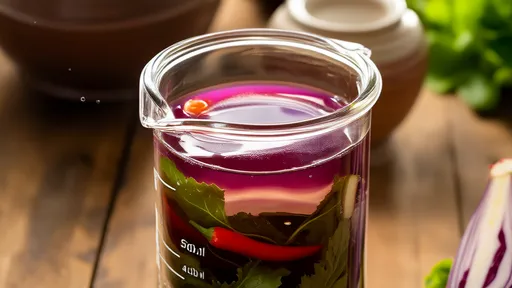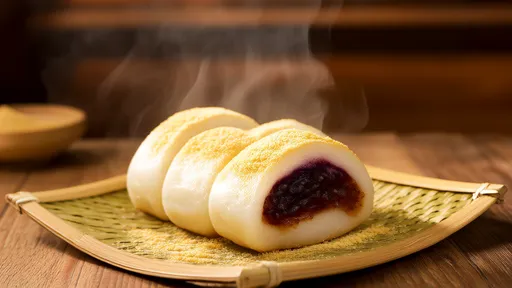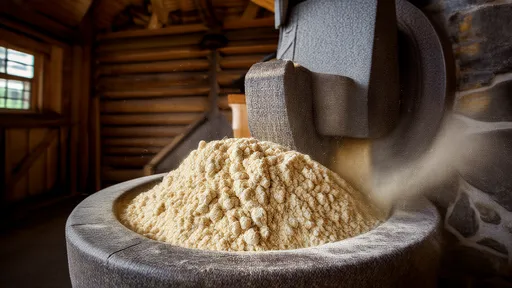The world of sensory evaluation is as intricate as it is fascinating, particularly when it comes to understanding how we perceive flavors and aromas. Among the myriad of compounds that contribute to our sensory experiences, vanillin—the primary component of vanilla extract—stands out for its widespread use and complex interaction with our senses. The concept of odor threshold plays a pivotal role in determining how much of this compound is needed for it to be detectable, and it varies significantly depending on the medium in which it is presented.
Vanillin, chemically known as 4-hydroxy-3-methoxybenzaldehyde, is responsible for the characteristic sweet, creamy aroma of vanilla. Its odor threshold is a critical parameter for food scientists, perfumers, and flavorists, as it dictates the minimum concentration required for the human nose to detect its presence. In water, vanillin's detection threshold is remarkably low, often cited at around 20 parts per billion (ppb). This means that even trace amounts can impart a noticeable vanilla scent, making it a potent flavoring agent in beverages and dairy products.
However, the threshold is not a fixed value. It fluctuates based on the matrix in which vanillin is dissolved. For instance, in oil-based systems or high-fat foods like ice cream or chocolate, the threshold can be significantly higher—sometimes exceeding 100 ppb. This disparity arises because fat molecules can bind to vanillin, reducing its volatility and thus its availability to interact with olfactory receptors. Understanding these variations is crucial for formulators who aim to achieve consistent flavor profiles across different product categories.
The human olfactory system's sensitivity to vanillin also varies among individuals, influenced by factors such as genetics, age, and even temporary conditions like nasal congestion. Some people may detect vanillin at concentrations as low as 10 ppb, while others might require double or triple that amount. This subjectivity underscores the importance of sensory panels in product development, where trained assessors evaluate flavors under controlled conditions to ensure reproducibility and consumer appeal.
Beyond its threshold, vanillin's sensory impact is shaped by its interaction with other compounds. In natural vanilla extract, hundreds of minor constituents—such as piperonal, anisaldehyde, and phenolic acids—modulate vanillin's perception, often creating a more rounded and complex aroma than synthetic vanillin alone. This synergy explains why natural vanilla is often preferred in high-end culinary applications, despite its higher cost. The presence of these co-compounds can lower the perceived threshold of vanillin, making the overall aroma more intense and nuanced.
Interestingly, vanillin's threshold is also affected by temperature. Warmer environments increase its volatility, enhancing its detectability in air—a principle exploited in the fragrance industry. Conversely, chilled products may require higher vanillin concentrations to achieve the same aromatic impact. This thermal dependency is particularly relevant for products like baked goods, where vanillin's release evolves during cooking and cooling, creating a dynamic sensory experience.
From a consumer perspective, the threshold concept has practical implications. Overuse of vanillin can lead to an overpowering, almost medicinal taste, as many people associate excessive vanilla notes with artificiality. Striking the right balance is an art, especially in products where vanilla is a supporting note rather than the dominant flavor. For example, in fruit-flavored yogurts or caramelized desserts, vanillin is often used below its individual threshold to subtly enhance sweetness without announcing its presence.
Modern analytical techniques like gas chromatography-olfactometry (GC-O) have revolutionized threshold measurements by isolating and quantifying aroma-active compounds. These methods confirm that vanillin's potency is not just about concentration but also about its release kinetics—how quickly it transitions from the product to the air and then to the olfactory epithelium. Such insights are invaluable for designing encapsulation technologies that control vanillin's release in chewing gums or timed-release flavor systems.
As clean-label trends grow, replacing synthetic vanillin with natural alternatives has become a priority for many brands. However, this shift isn't straightforward. Natural vanillin derived from ferulic acid or lignin often carries impurities that alter its sensory threshold. Even vanilla bean extracts vary by origin—Madagascar Bourbon vanilla versus Tahitian, for instance—each with distinct threshold profiles due to their unique minor component landscapes. These nuances challenge product developers to maintain consistent flavor intensity when switching sources.
The study of vanillin's odor threshold transcends academic curiosity; it's a cornerstone of flavor chemistry with real-world ramifications. Whether optimizing a vanilla latte's recipe or crafting a new perfume, understanding how little vanillin is needed to tickle the senses—and how that amount changes with context—is what separates mediocre products from memorable ones. As research delves deeper into individual sensitivity patterns and cross-cultural preferences, our grasp of this deceptively simple molecule continues to evolve, promising even more sophisticated applications in the future.
The art of baking a perfect cake relies heavily on understanding the science behind its structure. Among the many factors that contribute to a cake's texture, the uniformity of air pockets within the cake crumb stands out as a critical element. This characteristic is largely influenced by the foaming properties of proteins in the batter, particularly those found in eggs. The way proteins trap and stabilize air bubbles during mixing directly impacts the final product's lightness, tenderness, and overall mouthfeel.
The world of sensory evaluation is as intricate as it is fascinating, particularly when it comes to understanding how we perceive flavors and aromas. Among the myriad of compounds that contribute to our sensory experiences, vanillin—the primary component of vanilla extract—stands out for its widespread use and complex interaction with our senses. The concept of odor threshold plays a pivotal role in determining how much of this compound is needed for it to be detectable, and it varies significantly depending on the medium in which it is presented.
The world of chili peppers is as diverse as it is fiery, with each variety packing its own unique punch. At the heart of understanding this heat lies the Scoville Scale, a measurement that quantifies the spiciness of peppers. Developed by Wilbur Scoville in 1912, this scale remains the gold standard for gauging the capsaicin content—the compound responsible for that burning sensation—in different peppers. From the mild bell pepper to the mind-numbing Carolina Reaper, the Scoville Scale offers a fascinating glimpse into the spectrum of heat that chili enthusiasts chase.
The culinary world has long celebrated the magic that happens when certain ingredients come together, creating flavors greater than the sum of their parts. One such pairing—chicken broth and mushrooms—exemplifies the scientific and gastronomic phenomenon known as umami synergy. This dynamic duo has been a staple in kitchens across cultures, from French consommé to Japanese ramen, and its power lies in the way their compounds interact to amplify savory depth.
The world of fermented foods is a fascinating intersection of microbiology, chemistry, and culinary tradition. Among these, kimchi stands out not only for its bold flavors but also for the intricate biochemical processes that transform raw vegetables into a probiotic-rich delicacy. At the heart of this transformation lies a phenomenon known as acetic acid penetration, which creates a dynamic pH gradient during fermentation. This process is far more than a simple souring of cabbage—it's a carefully orchestrated dance between microbial communities and their chemical environment.
The turbidity of fruit juice, often perceived as a mark of freshness and natural quality, is primarily governed by the suspension mechanisms of pulp particles. These tiny fragments of fruit flesh, ranging from cellular debris to larger fibrous clusters, create the characteristic cloudiness that consumers associate with premium products. Behind this seemingly simple phenomenon lies a complex interplay of physical forces, biochemical interactions, and processing variables that determine whether pulp remains evenly dispersed or separates over time.
The fizz in your soda isn't just about taste—it's a carefully engineered dance between gas and liquid that begins unraveling the moment you twist open the cap. Few consumers realize how precisely carbonation levels are calibrated, or how dramatically pressure dynamics shift during that first explosive release. This invisible physics experiment in every bottle follows predictable but fascinating patterns that beverage scientists have spent decades mapping.
The world of espresso is as complex as it is captivating, with its rich flavors and aromatic allure. At the heart of this complexity lies a seemingly simple yet scientifically intricate component: the crema. This golden-brown layer of foam that crowns a well-pulled shot of espresso is not just a visual delight but a fascinating study in colloidal stability. The interplay of oils, gases, and solids in espresso crema reveals a delicate balance that defines the quality and texture of the coffee.
The phenomenon of "cold turbidity" or "cream down" in tea has long intrigued both tea connoisseurs and scientists alike. This natural occurrence, where tea liquor turns cloudy upon cooling, is not merely an aesthetic curiosity but a window into the complex chemistry of tea. Recent advancements in optical measurement techniques have enabled researchers to quantify this phenomenon through turbidity detection based on tea liquor transmittance, opening new avenues for quality assessment and understanding of tea's molecular interactions.
The world of instant noodles thrives on convenience, but behind that simplicity lies a carefully engineered marvel of food science. At the heart of this innovation sits pregelatinized starch—an unsung hero that transforms dehydrated noodles into a steaming bowl of comfort within minutes. Unlike traditional starch, pregelatinized starch undergoes a thermal and mechanical treatment that breaks down its granular structure, allowing it to absorb water rapidly. This property is pivotal for instant noodles, where rehydration speed and texture determine consumer satisfaction.
The world of traditional fermented foods holds countless microbial secrets, and few are as fascinating as the complex ecosystem of laomian – the centuries-old sourdough starter that gives Chinese steamed bread its distinctive character. While modern bakeries increasingly rely on commercial yeast, artisanal producers across northern China still maintain their family laomian cultures like precious heirlooms, passing down not just techniques but living microbial communities through generations.
The sticky, chewy texture of glutinous rice cakes, known as mochi in Japanese or nuòmǐ cí in Chinese, has long been a staple in East Asian cuisine. These delectable treats, often enjoyed during festivals or as everyday snacks, owe their unique consistency to a key component: amylopectin, the branched-chain starch found in glutinous rice. However, anyone who has left mochi or Chinese mochi cakes (糍粑) at room temperature for a few hours will notice an unmistakable transformation—the once-soft and pliable dessert gradually hardens, becoming tougher and less enjoyable. This phenomenon, often referred to as retrogradation, is a fascinating interplay of chemistry, physics, and culinary science.
The art of cooking perfect rice lies in understanding the gelatinization temperature of different japonica rice varieties. This scientific parameter, often overlooked by home cooks, determines the precise moment when starch granules absorb water and swell—fundamentally shaping texture, flavor release, and nutritional accessibility. Recent studies across Asian research institutions reveal how subtle genetic variations in short-grain rice cultivars create distinct thermal behaviors during cooking, challenging the one-size-fits-all approach to water ratios and heat application.
The art of crafting perfect hand-pulled noodles lies in mastering the delicate balance between gluten development and dough relaxation. Among the many variables that influence noodle extensibility, resting time stands as one of the most critical yet often overlooked factors. This silent alchemy occurring during the waiting period transforms a stiff, unyielding mass into an elastic, cooperative material ready to be stretched into silky strands.
For generations, home cooks and professional chefs alike have relied on stainless steel containers for pickling and food storage. The material's reputation for durability and corrosion resistance makes it a seemingly ideal choice. But when acidic ingredients like vinegar enter the equation, questions arise about potential metal leaching and food safety. Understanding the interaction between stainless steel and pickling brines requires a deeper dive into metallurgy, chemistry, and culinary science.
The bamboo steamer, a centuries-old culinary tool cherished across Asian kitchens, operates on principles far more sophisticated than its simple appearance suggests. Among its most fascinating phenomena is the so-called "bamboo steamer effect" – a self-regulating mechanism that prevents the dreaded condensation drip-back, ensuring perfectly textured dumplings, buns, and fish every time. This natural engineering marvel has captivated chefs and scientists alike, revealing how traditional wisdom often anticipates modern food science.
The age-old practice of stone milling has long been revered for its ability to produce flour that retains the natural goodness of whole grains. Unlike modern industrial milling methods, which often prioritize speed and shelf life, stone grinding operates at a slower pace, preserving the integrity of the grain’s nutritional profile. One of the most significant advantages of this traditional method is its ability to maintain higher levels of dietary fiber in whole wheat flour—a component essential for digestive health, blood sugar regulation, and overall well-being.
















